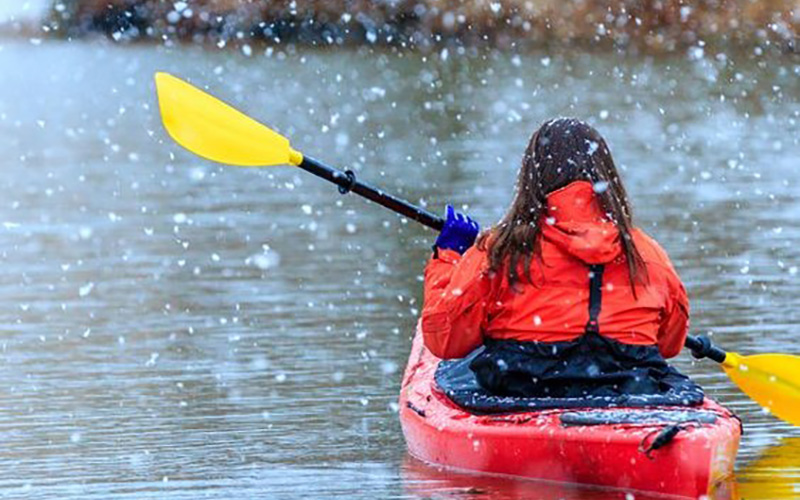- English
- Español
- Português
- русский
- Français
- 日本語
- Deutsch
- tiếng Việt
- Italiano
- Nederlands
- ภาษาไทย
- Polski
- 한국어
- Svenska
- magyar
- Malay
- বাংলা ভাষার
- Dansk
- Suomi
- हिन्दी
- Pilipino
- Türkçe
- Gaeilge
- العربية
- Indonesia
- Norsk
- تمل
- český
- ελληνικά
- український
- Javanese
- فارسی
- தமிழ்
- తెలుగు
- नेपाली
- Burmese
- български
- ລາວ
- Latine
- Қазақша
- Euskal
- Azərbaycan
- Slovenský jazyk
- Македонски
- Lietuvos
- Eesti Keel
- Română
- Slovenski
- मराठी
- Srpski језик
What should I wear for kayaking in winter
2022-12-19
What should I wear for kayaking in winter?
In the winter, many friends are entangled in whether to go boating, whether it will be cold when rowing and a series of questions. But, as long as you choose the right type of boat and choose the right clothes, you can enjoy boating even in winter.
As an important part of outdoor sports, boating also follows the dressing rules of this outdoor sport: the three-layer dressing method.
The three-layer dressing method is also called the stacking method, also known as the onion dressing method. It refers to the method of dividing clothes into different characteristics and wearing them in multi-layer superposition according to the actual weather and body temperature. Add clothes when it's cold, and take off clothes when it's hot, to maximize physical comfort, protecting the innermost core layer by layer like an onion. So how should we apply the three-layer dressing method when we are rowing leisurely?

The first is the inner layer, also known as the quick-drying layer, which is the layer of clothing that fits the skin best. Outdoor sports are often accompanied by sweating. If the sweat cannot be sent out in time to dry the clothes, you will always feel wet all the time,If you get a cold and fever, it is a small problem. Once you lose temperature, the consequences will be serious. will be serious. High-quality inner layer materials generally choose polyester or merino wool. Cotton clothes generally do not consider wearing the innermost layer of the seat, because it is too difficult to dry, and once wet, it will last all day.
Then there is the middle layer, the insulation layer. The insulation layer is the core of dressing, and the addition and removal of clothing are all carried out on this layer. Generally speaking, down and fleece are frequent visitors in this layer. Fleece has a very good characteristic, that is, even when the fleece is wet and wrung out a little, it still has a certain warmth retention effect, while down does not have such a characteristic. Of course, if the weather is really cold, down can also be used as an option for the middle layer.
And finally the outer layer, the protective layer. Water sports need waterproof and windproof. The water resistance is designed to mimic the wetness of the inner clothing or the splash of water when you paddle. Windproof is to imitate the loss of body temperature caused by the wind-cooling effect. Typically this layer of choice will have softshell, hardshell, and nautical jackets.
The essential life jacket worn on the outside is equivalent to a thick vest. The body will heat up during exercise, so it will be worn a little less than when it is stationary on land.
The above dressing skills have their scope of adaptation, that is, sports on the water, such as kayaking, canoeing, or sailing, such sports that do not touch water are more suitable. For sports like surfing, diving, paddle boarding, white water, etc. that may get into the water, more professional wet suits and dry suits are used.
To sum up, waterproof, windproof, and breathable (quick-drying) are the three most important attributes of water sports. All outfit combinations are based on these three attributes. Of course, there is no need to think that water sports need to buy clothes especially. These clothes can be found in your wardrobe instead.



